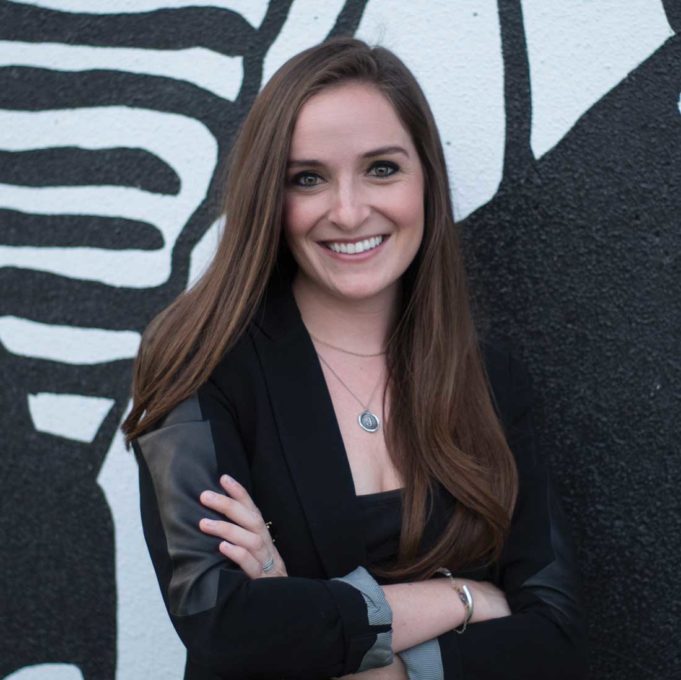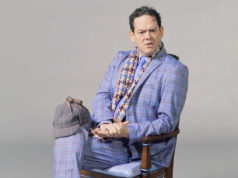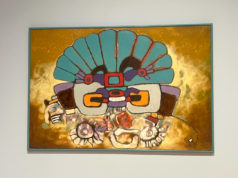A mural contest by Trinity River Distillery recently drew sharp criticism, largely because the pay is “$1,000 in whiskey.”
“How is an artist going to become a great artist that can contribute to our society if he can’t make a living?” one artist commented. “Business people are taking advantage of artists who desperately want to do their work.”
The remuneration offered by the distillery seems at odds with the economic boon muralists and other creatives bring the city each year. A recent study by the arts advocacy group Americans for the Arts found that, collectively, nonprofits like Fort Worth Public Art, Fort Worth Opera, and the Arts Council of Fort Worth generated $450.6 million in local spending in 2015. The report compiled data from 74 Fort Worth nonprofit arts and cultural organizations. Imagine if for-profit organizations were included.
“Few industries generate the kind of event-related spending as the arts do,” said Randy Cohen, vice president of research and policy for Americans for the Arts. Speaking at the Renzo Piano Pavilion’s concert hall last week, he laid out the numbers.
“We did a random sample of 547 attendees of [Fort Worth] arts events,” he said. “The patrons spent $36 per person, not including the price of admission. Those dollars were spent at restaurants, hotels, gift shops, and elsewhere.”
More than 14,000 jobs are supported by Fort Worth’s arts groups, he added. The concerts, events, and shows put $56 million into city, county, and state coffers.
Megan Henderson, director of events and communications for the nonprofit development group Near Southside Inc., said it’s important to go beyond the emotive aspects of the music and paintings and to simply state the economic value artists bring. Artists may resent being distilled into dollars and cents. No matter what value they offer, cities and public schools have a long history of putting the arts first in line when budget cuts are called for. But it’s a strategy that Near Southside and Americans for the Arts are committed to.
“Within the development field,” Henderson said, “we know that [an area’s] cultural value is an indicator of its broader economic value.”
The Near Southside, she continued, “has been a beneficiary of creative people. Artists were the first to reinvest in the district. Over the past 25 years, they have been a strong voice. I think that’s why we have grown differently and slower than West 7th. Artists are cultural attractors. They make the district worth visiting.”
The Near Southside isn’t the only district getting in on the trend. Last spring, several local painters were commissioned by the commercial real estate company M2G to create a large mural along a breezeway just north of the West 7th corridor. Dubbed “Inspiration Alley,” the large collaboration is just one of several new murals and outdoor artworks commissioned by M2G throughout the city.
“Artists are some of the most important entrepreneurs in our society,” said Jessica Miller, M2G co-president. “Giving them opportunities to express their ideas gives life to things happening in our society but also to timeless themes all people can relate to.”
For an industry that generates hundreds of millions in revenue each year, the arts have had a shaky history regarding city and corporate funding. In 2013, the city-appointed Arts Funding Task Force released a report that found public funding for the arts, then $0.94 per capita, lagged “far behind” other major Texas cities. Cuts in corporate donations following the 2009 recession have been detrimental to local performing arts groups like the Fort Worth Symphony Orchestra and Fort Worth Opera, according to several prominent arts directors.
Local painter Jay Wilkinson said local businesses are beginning to realize the value artists bring.
“ ‘Inspiration Alley’ was a big step,” he said. “They made it comfortable to do, and they did pay us. There are a lot of businesses thinking about [hiring artists] now.”
Unfortunately, he added, artists often have to defend the value of their work.
“Many business owners believe that we are in love with this, and it’s simple for us to do,” he said. “Sometimes it’s painful and difficult work painting on a ladder for 19 hours. There have been some great strides, but Fort Worth is a long way from taking risks on these artists and giving them what they deserve.”
Henderson said Near Southside-based businesses are beginning to see the arts as something worth investing in. Last month, the Near Southside bar/restaurant Kent & Co. Wines commissioned Wilkinson to construct a 20-foot-tall mobile puppet as an attraction for the biannual arts fair ArtsGoggle.
Kent & Co. Wines “were willing partners because they knew the value of something great,” Henderson said. “That drew thousands of people to their business. They had a competitive advantage by embracing the talent of an artist.”
Another Near Southside business, Caliber Collision, committed $25,000 to commision two local artists to paint a large mural on two of the business’ walls. It wasn’t a charitable handout, Henderson said. She said the business saw it as a worthwhile investment.
Cohen’s parting words for Mayor Betsy Price and the councilmembers: The arts aren’t just nice. They’re necessary.
Artists and musicians are professionals who should be paid, he said, not just with in-kind donations and the “privilege” to have their work seen by the public.
“Artists spend years being professionally trained, and they hone their craft every day,” he said. “We wouldn’t compensate a computer programmer with a shiny new calculator or an oil rig worker with a new pair of leather gloves. Those are professionals who should be financially compensated, and artists are no different.”











